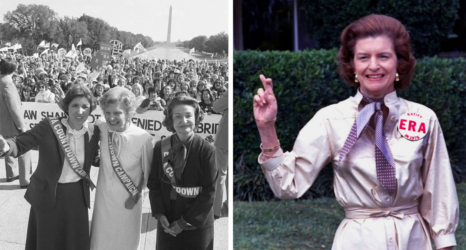The Equal Rights Amendment is making a comeback.
Nearly a century since the ERA was first introduced in Congress, and four decades since its unsuccessful ratification campaign, there is revived interest in enshrining the principle of gender equality in our Constitution.
Over the past two years, the Nevada and Illinois state legislatures ratified the ERA by comfortable margins, breathing new life into the proposed amendment. Advocates now believe that achieving the necessary 38 state ratifications is within reach.
What’s in store for the ERA? And how might it advance the fight for gender equality in the U.S. today? These questions are being newly debated across the country—and in a day-long event organized by the Brennan Center for Justice at New York University School of Law last November, an array of politicians, scholars, legal advocates and activists examined the implications of this modern movement for legal change.
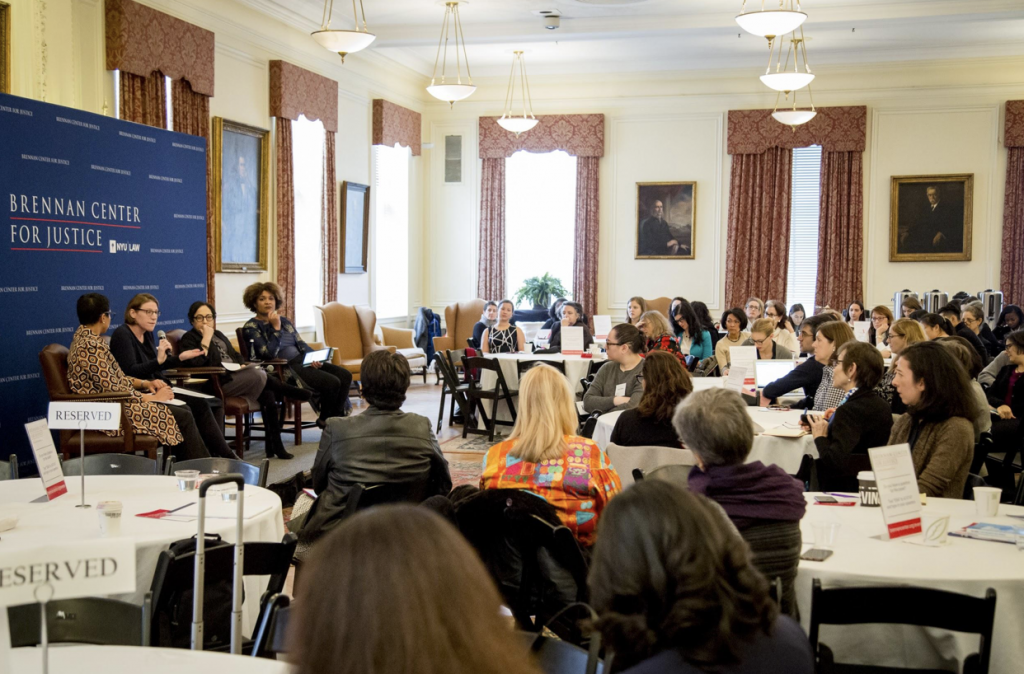
The ERA, originally drafted by suffragist leader Alice Paul, was first introduced in Congress in 1923—three years after the Nineteenth Amendment opened the ballot box to women. Seeking to build on the political momentum, Paul and other activists launched an effort to secure women’s full and explicit right to equality under the law.
The original proposal, surprisingly radical for the time given the prevalence of traditional gender roles, read: “Men and women shall have equal rights throughout the United States and every place subject to its jurisdiction. Congress shall have power to enforce this article by appropriate legislation.”
Paul and other advocates spent decades lobbying for the proposal. Proponents introduced resolutions proposing an ERA, but made little headway in a Congress that, from 1917 to 1970, had a grand total of 67 female members, with no more than 22 serving at any given time.
The amendment’s political fortunes improved as the women’s movement gained strength in the sixties: In 1969, Shirley Chisholm, the first African American woman elected to Congress and “no stranger to race prejudice,” called on her colleagues to adopt the ERA, explaining “that in the political world I have been far oftener discriminated against because I am a woman than because I am black.” The following year, Martha Griffiths, the amendment’s champion, whipped enough votes in the House to get the ERA resolution out of committee through the discharge petition, a seldom-used procedural tactic. (Griffiths had also played a pivotal role in making sure the Civil Rights Act of 1964 included a ban sex discrimination.)
At the conference, panelists recalled Griffith’s tireless efforts at time of extraordinary social change. Cary Franklin, professor at the University of Texas at Austin School of Law, noted that her big push occurred against the backdrop of the Women’s Strike for Equality—“the biggest demonstration for women’s rights since the women’s suffrage movement… [in which] thousands of women across the country organized in cities and made a number of demands about women’s equal citizenship, including education, employment, reproductive rights and child care.”
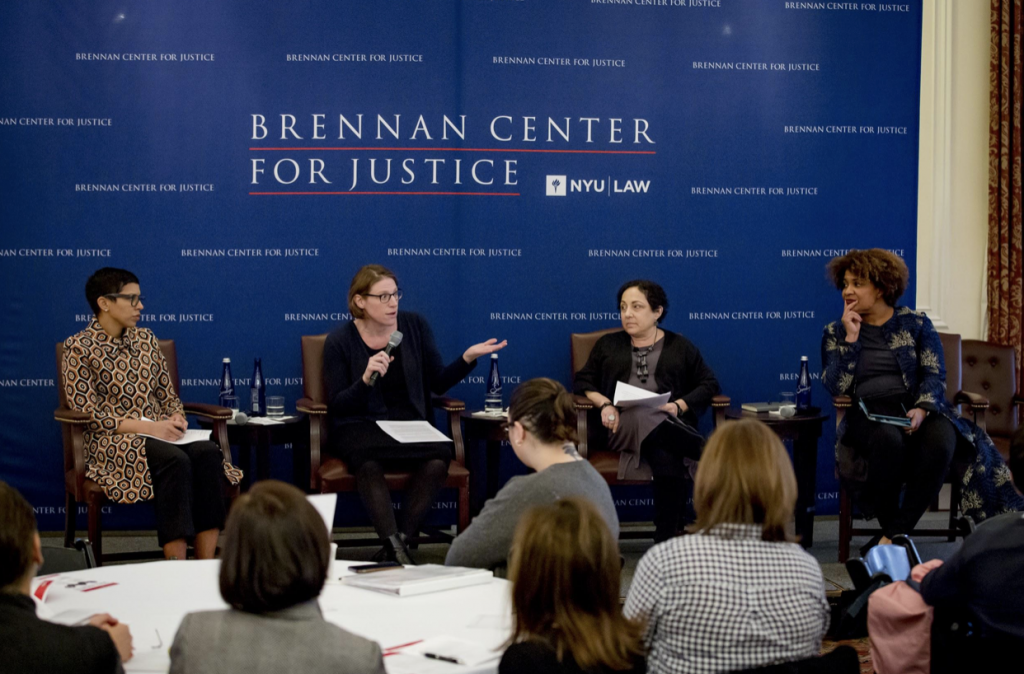
In 1972, propelled by the hard work of strikers and activists nationwide, Congress finally sent the ERA to the states for ratification. The lawmakers adopted a version that differed from the original. It read: “Equality of rights under the law shall not be denied or abridged by the United States or any State on account of sex. The Congress shall have the power to enforce, by appropriate legislation, the provisions of this article.”
After so many years of campaigning, the measure won overwhelming support from Democrats and Republicans alike—well beyond the two-thirds required to propose a constitutional amendment—and even secured the endorsement of President Richard Nixon. The National Organization for Women and other advocacy groups cheered this promising step forward.
It seemed like a sure bet: The ERA was almost certain to become the 27th Amendment. With blazing speed, in a mere 18 months, 30 state legislatures moved quickly to ratify it. By 1977, the measure had the support of 35 states—three short of the goal. But momentum slowed as the ERA met a wave of conservative resistance.
Phyllis Schlafly, a lawyer and self-described homemaker from Illinois, led the STOP ERA campaign, which appealed to base fears—for example, that the amendment would lead to women serving in combat and the elimination of single-sex bathrooms. While the measure’s advocates in Illinois lined up “business leaders, union leaders, priests, ministers, nuns, rabbis to testify in favor of the ERA,” recalled Professor Franklin, “the STOP ERA campaign simply [brought] forward a procession of teenage girls, one from each district in the state, to say: ‘please don’t draft me, I do not want to enter the military.’”
Many credit the STOP ERA campaign with derailing the proposed amendment. Even after Congress took the unusual step of extending the ratification deadline, the campaign failed to obtain the support of the required 38 states. Complicating matters further, five state legislatures that initially supported the ERA eventually voted to rescind their ratification.
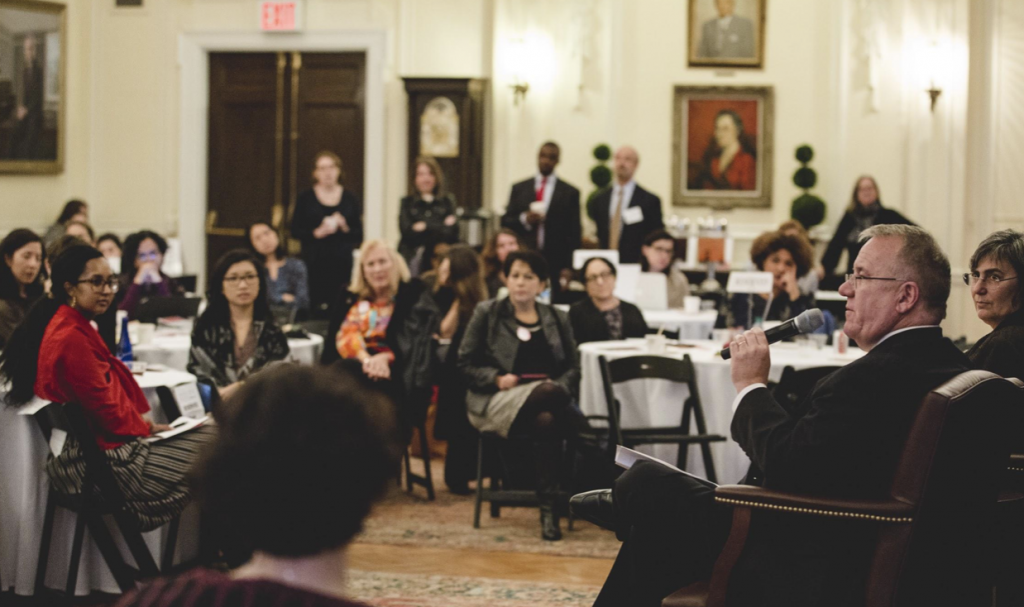
The extended deadline for ratifying the ERA finally lapsed in 1982—but in the following decades, the fight for gender equality made significant progress. Constitutional lawyers, working through the courts, helped fuel the rise of a new gender equality jurisprudence based on the Fourteenth Amendment’s guarantee of equal protection. Women have surpassed men in college enrollment and now actively serve alongside men in the armed forces. The percentage of women in the labor force has risen to nearly 60 percent.
Women have made tremendous inroads at the highest levels of business, nonprofit organizations and government. This legal and social change was made possible by the pioneering work of activists, advocates and legislators.
And yet, U.S. women have not yet achieved equal status.
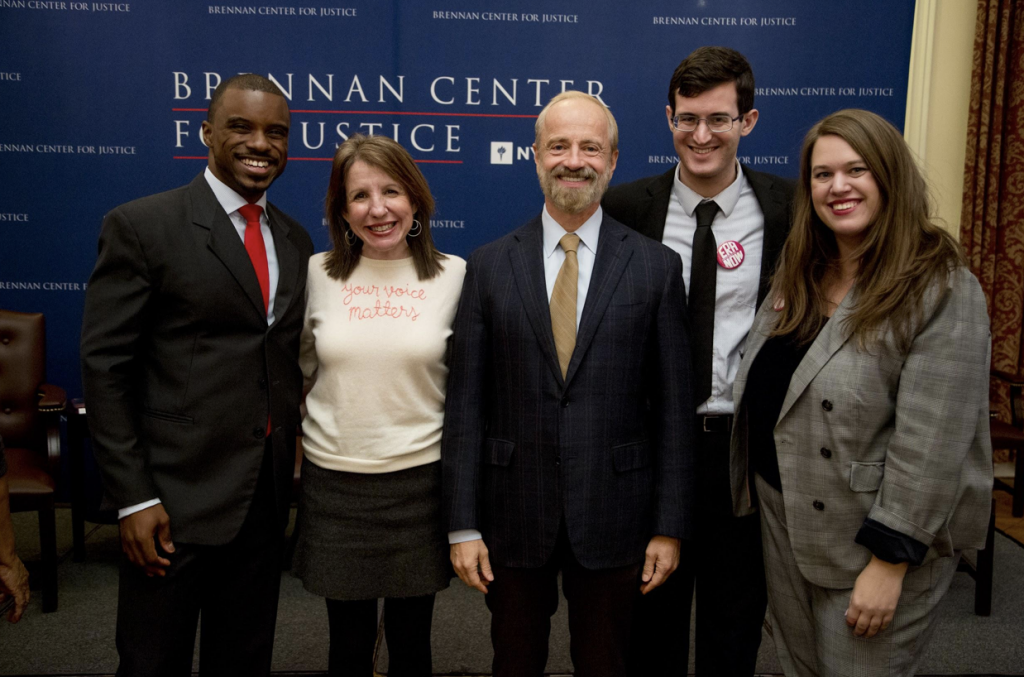 (Left to Right) The Brennan Center for Justice’s organizers for the event include Wilfred Codrington, Jennifer Weiss-Wolf, John Kowal, Alex Cohen, and Lauren Anderson. ©Kahn: Courtesy of NYU Photo Bureau
(Left to Right) The Brennan Center for Justice’s organizers for the event include Wilfred Codrington, Jennifer Weiss-Wolf, John Kowal, Alex Cohen, and Lauren Anderson. ©Kahn: Courtesy of NYU Photo Bureau
Today, women are paid approximately 80 cents for every dollar that their male counterparts make—and, in the case of women of color, even less. Women are also overrepresented in the lowest wage positions, which are less likely to offer job security and critical employment benefits. Sexual harassment in the workplace is pervasive, as the #MeToo and #TimesUp movements have laid bare. The U.S. is the only developed country without a national paid family leave policy. And even as women have increased their ranks in political leadership, the disparities are still very evident. Amid all of the excitement around the “Year of the Woman,” which brought a record number of women to Congress, it is sobering to realize that just 23 percent of our federal lawmakers are women.
Many in power have focused on the symptoms of the problems—brushing aside, and even ignoring altogether, the larger, systemic concerns. But acting on the assumption that women and men have achieved equality has serious consequences. In the words of Jamia Wilson, Executive Director of the Feminist Press, organizations must recognize that “the tools are not agnostic,” or free from bias, even in a more just and equal world. As today’s leaders grapple with this reality, new—or, in the case of the ERA, renewed—opportunities arise for bipartisan solutions to problems that are endemic to our most important institutions.
Nevada State Senator Pat Spearman, a Democrat, and former Illinois State Representative Steve Andersson, a Republican, embody this emerging spirit. The two lawmakers played critical roles in getting their states to ratify the ERA after so many years, bringing us to the present tipping point.
“That’s what I had to do—I couldn’t do anything less,” Spearman explained when asked why she waged the ratification battle in Nevada. “If you’re not on the right side of history, you’re gonna embarrass your great grandchildren. This is the right thing to do, it’s the right time to do it, and so we just ought to do it.”
With some understatement, Andersson called himself “the plumber” in the company of the measure’s “architects and engineers.” Enlisting his fellow Republican lawmakers, in the face of the same fear mongering tactics that doomed the ERA four decades ago, he helped provide the margin of victory. “My job is to pass the bill,” he emphasized. “That’s my only job… to get enough votes to do this.”
 Nevada State Senator Pat Spearman was the driving force behind her state’s ratification of the ERA in 2017. At the Brennan Center event, she explains how her experiences as a woman of color compelled her to take up the ERA. ©Kahn: Courtesy of NYU Photo Bureau[/caption]
Nevada State Senator Pat Spearman was the driving force behind her state’s ratification of the ERA in 2017. At the Brennan Center event, she explains how her experiences as a woman of color compelled her to take up the ERA. ©Kahn: Courtesy of NYU Photo Bureau[/caption]
Americans of all political stripes are taking a fresh look at the ERA. This renewed interest in the amendment comes at a moment of resurgence in the long march toward gender equality—which has propelled the Women’s Marches, the #TimesUp and #MeToo movements and an encouraging rise in women’s civic engagement.
NYU School of Law Professor Melissa Murray put it aptly, explaining that gender equality has become “part of the conversations people are having around kitchen tables and with friends about no longer being willing to accept what has been the status quo for so long.” With Arizona, Oklahoma, South Carolina and Virginia all vying to be the lucky 38th state, it’s a good time for the entire nation to reflect on what the long-overdue ratification of the ERA can and should mean for gender equality in the U.S. in the 21st century.





